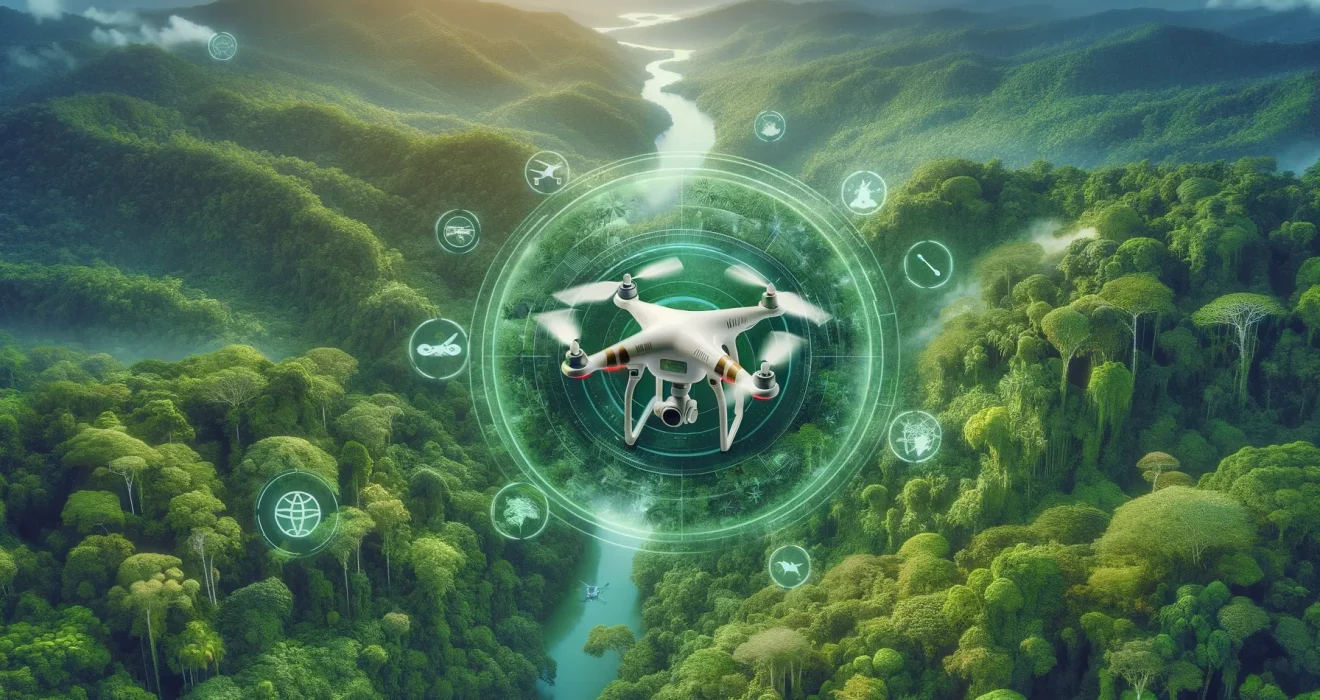In an increasingly digitized world, where social media platforms and online interactions shape our daily lives, scientists are pioneering a bold new approach to biodiversity monitoring. Led by Dr. Andrea Soriano-Redondo and a team of global collaborators, a groundbreaking strategy is emerging from the University of Helsinki. This strategy proposes harnessing the wealth of digital data available online to complement traditional monitoring efforts and address the urgent challenges of the global biodiversity crisis.
Explore the innovative strategies proposed by these visionary scientists, highlighting the multifaceted applications of online digital data in biodiversity conservation. As we stand on the cusp of a digital revolution in environmental science, the integration of online data promises to revolutionize our understanding and stewardship of the natural world.
In a recent publication in the esteemed journal PLOS Biology, Dr. Soriano-Redondo and her colleagues unveil the transformative potential of online digital data in illuminating shifts in biodiversity dynamics. From images shared on social media to news articles covering ecological events, these digital footprints offer a wealth of information ripe for analysis. By integrating this vast and diverse dataset with existing biodiversity records, researchers aim to provide real-time insights into the status, trends, and pressures facing Earth’s ecosystems.
Harnessing Online Digital Data for Biodiversity Monitoring
In a groundbreaking move, scientists from the University of Helsinki, alongside global collaborators, propose an innovative strategy leveraging online digital data to bolster biodiversity monitoring efforts. Spearheaded by Dr. Andrea Soriano-Redondo, the lead author of a recent publication in PLOS Biology, this strategy marks a pivotal step forward in combating the escalating global biodiversity crisis.
By tapping into the vast reservoir of online data, encompassing social media platforms, news outlets, and image-sharing networks, researchers aim to enrich traditional biodiversity monitoring methods. This pioneering approach recognizes the immense potential of digital footprints to provide real-time insights into the status, trends, and pressures facing Earth’s ecosystems. Moreover, by integrating online data with existing biodiversity datasets, scientists seek to enhance the accuracy and comprehensiveness of conservation assessments.
As humanity grapples with the urgent need to protect and restore biodiversity, harnessing online digital data offers a promising pathway towards informed decision-making and proactive conservation action. This collaborative effort underscores the power of interdisciplinary research and technological innovation in addressing one of the most pressing challenges of our time.
Unveiling the Potential of Online Data
Dr. Soriano-Redondo highlights the remarkable potential residing within online digital data, particularly from social media platforms, to discern shifts in biodiversity. From images to comments, these digital footprints offer invaluable insights into the status, trends, and pressures facing biodiversity worldwide.
Diverse Data Sources and Applications
The strategy taps into a diverse array of online sources, including web pages, news media, social platforms, and image-sharing platforms. These rich datasets, encompassing geolocated distribution data and more, empower researchers to delve into various ecological facets, from distribution patterns to behavioral dynamics.
Real-Time Integration for Actionable Insights
Crucially, the proposed framework advocates for the real-time integration of online data with existing biodiversity datasets. This continuous influx of information not only enhances assessments of extinction risks but also informs conservation strategies on a global scale. Dr. Thomas Brooks underscores the significance of this approach in fortifying initiatives such as the IUCN Red List and identifying Key Biodiversity Areas.
Combatting Illegal Wildlife Trade
Beyond conservation assessments, online data offer a powerful tool in combatting illegal wildlife trade. By integrating with established databases like CITES and TRAFFIC, authorities gain access to critical intelligence, enabling more effective enforcement efforts. Professor Enrico Di Minin emphasizes the potential of social media data in uncovering illicit trade activities, shedding light on human-nature interactions impacting biodiversity.
Collaboration for Collective Impact
Realizing the full potential of online digital data necessitates interdisciplinary collaboration and partnership with digital media companies. As Professor Di Minin asserts, harnessing existing technology is feasible, but it requires concerted efforts across sectors to ensure data accessibility and maximize its utility in addressing not only the biodiversity crisis but also broader sustainability challenges.
Conclusion: A Digital Frontier for Biodiversity Conservation
In an era defined by digital connectivity, leveraging online data represents a transformative frontier in biodiversity conservation. With proactive integration and collaboration, we stand poised to harness the power of digital footprints to safeguard our planet’s precious biodiversity for generations to come.
The convergence of technology and conservation science opens up unprecedented opportunities to monitor, understand, and mitigate threats to biodiversity in near real-time. By capitalizing on the wealth of information available through social media, news outlets, and other digital platforms, researchers can gain invaluable insights into ecological trends and human-nature interactions. This newfound understanding enables us to formulate more effective conservation strategies and mobilize resources where they are most urgently needed.
As we navigate the complexities of the global biodiversity crisis, embracing the digital frontier offers hope for a sustainable future. Through collaborative efforts across disciplines and sectors, we can leverage the power of online data to inform policy decisions, empower local communities, and drive positive change on a global scale. Together, we have the potential to forge a path towards a more resilient and biodiverse planet for the benefit of all life forms.

